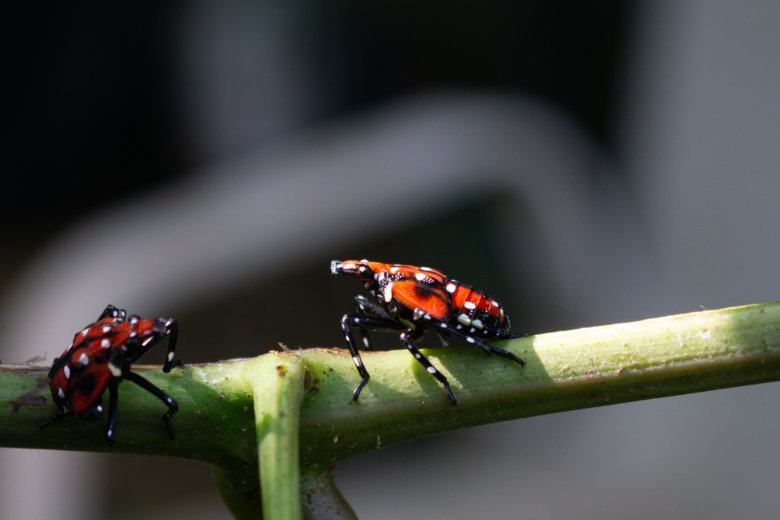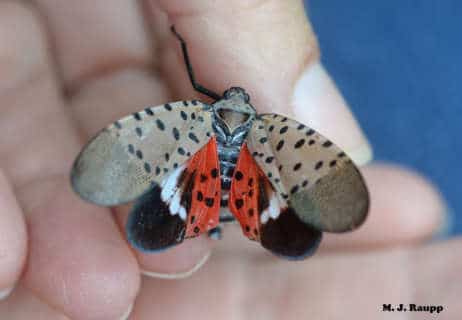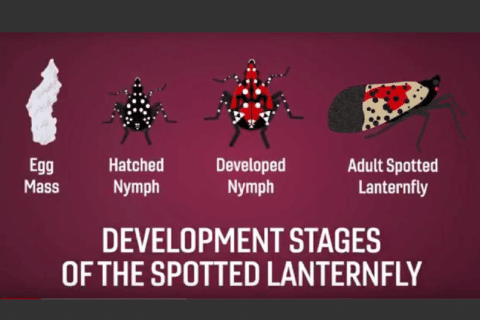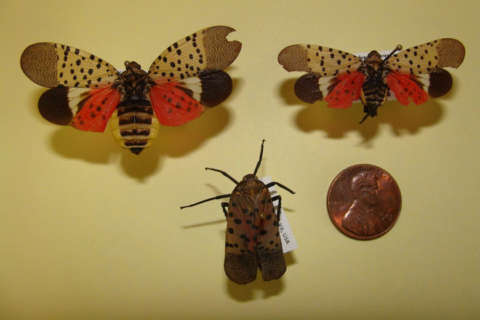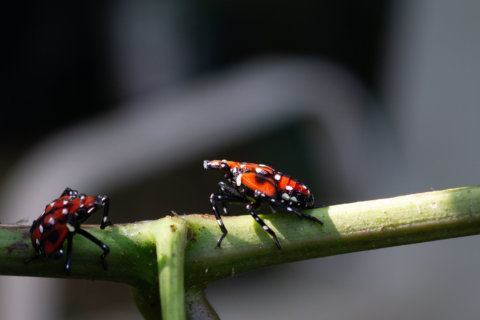
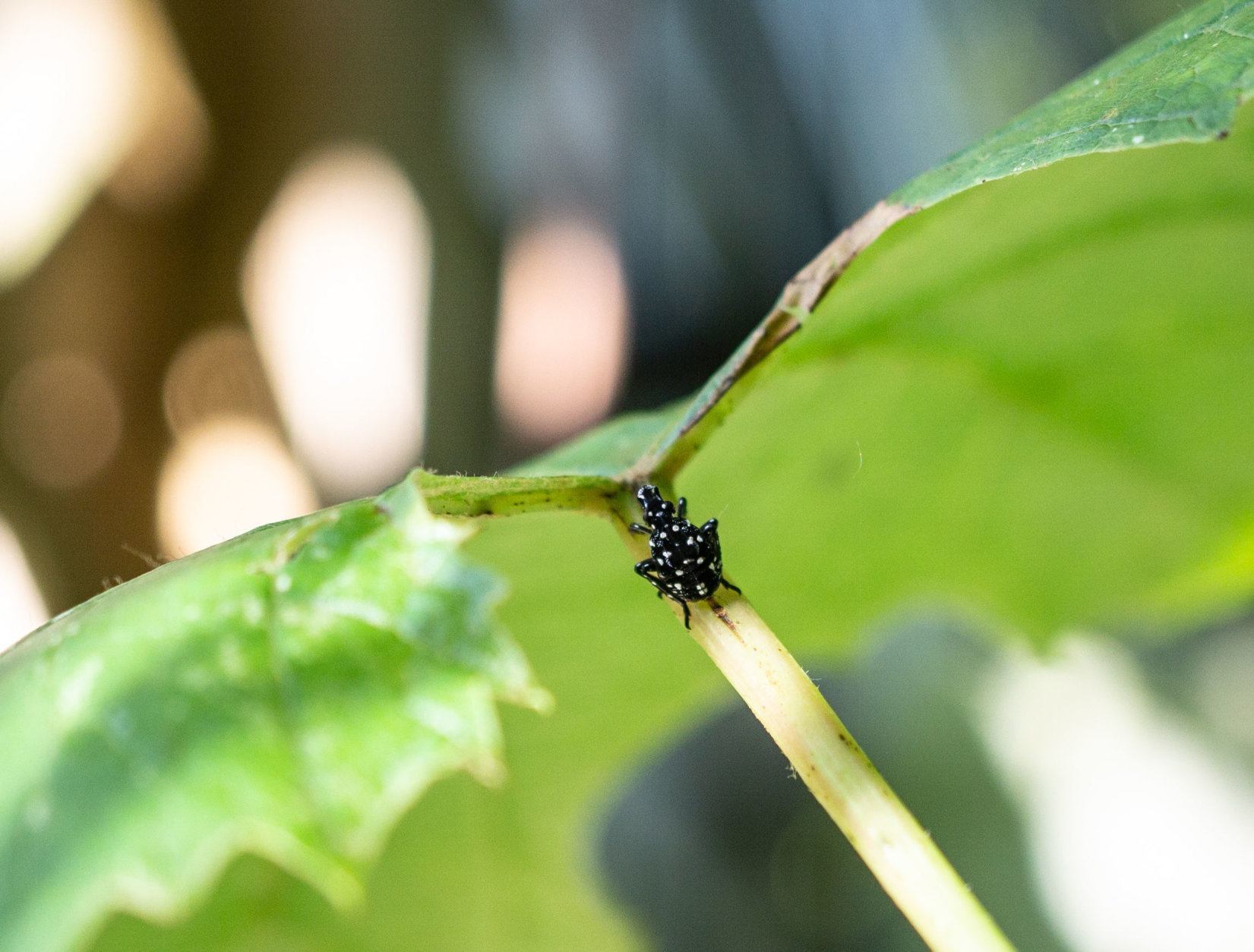
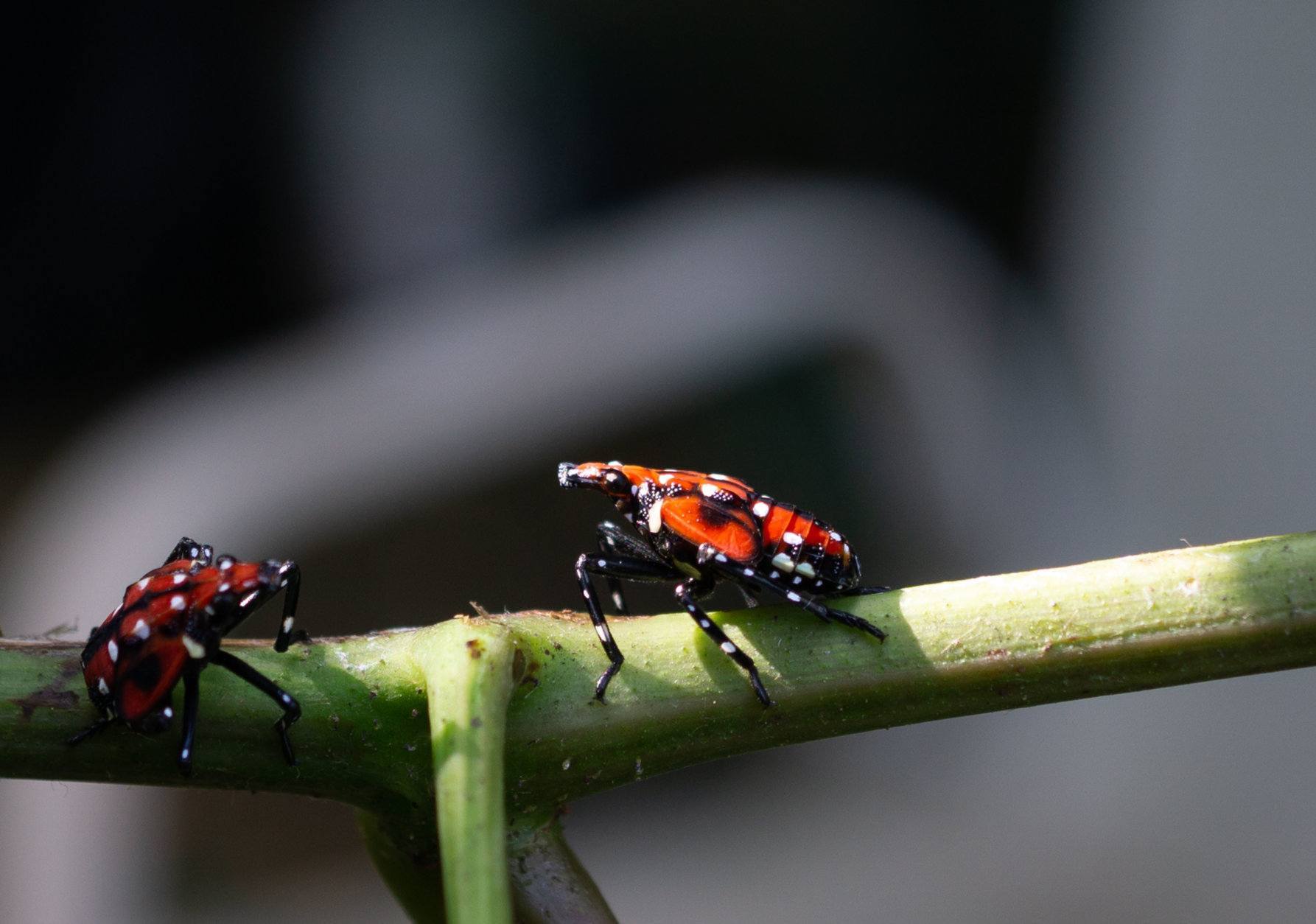
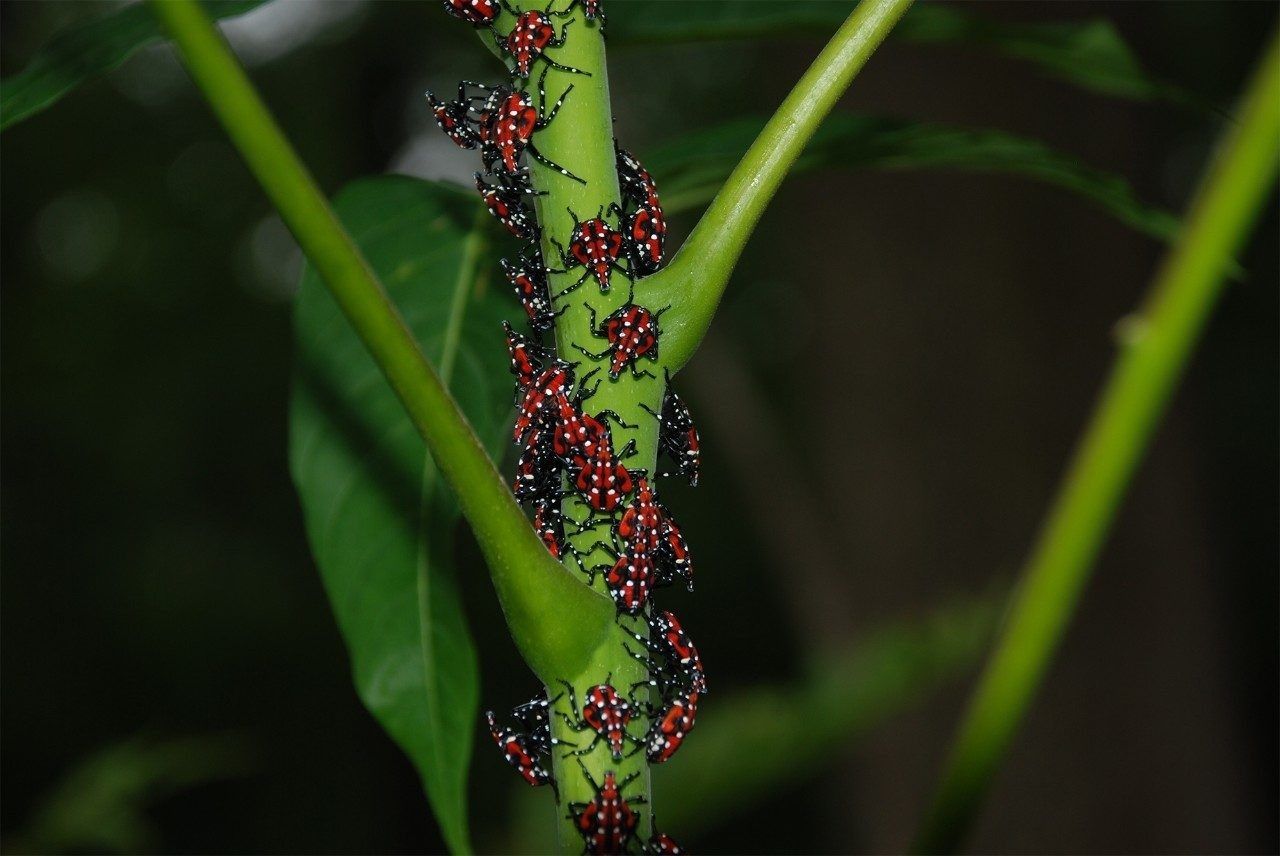
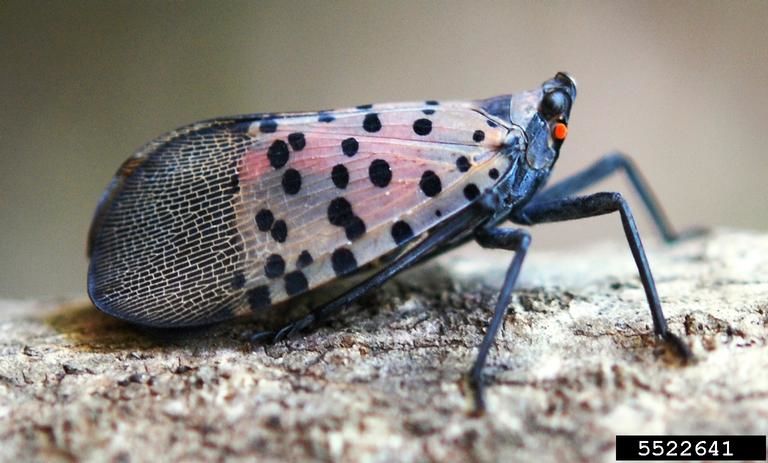
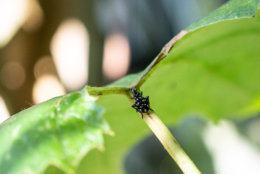
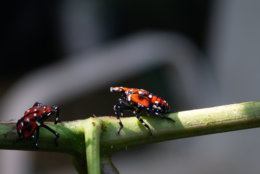

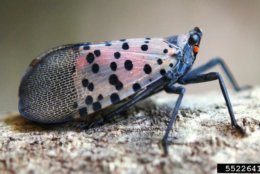
The quarantine is aimed at containing the spotted lanternfly, a species of insect indigenous to China, India, and Vietnam. The quarantine applies to Frederick County and the city of Winchester.
“We’re concerned about them spreading because they’re such good hitchhikers,” said Virginia Tech Insect Identification Lab diagnostician Dr. Theresa Dellinger.
Since first detected in Winchester in 2018, the insect’s range has expanded from one mile to 16 miles. Dellinger said it’s now established in Northern Virginia, New Jersey, Delaware and Pennsylvania, where it was confirmed in 2014. There’s concern about it spreading into Maryland.
In addition to reducing the yield and quality of crops they infest, the nature of how the spotted lanternfly damages plants means they also can pose a nuisance factor to homeowners.
Spotted lanternflies feed on plants’ sap and excrete a sticky substance called honeydew.
“That can attract bees, wasps and flies. It can also ferment and cause the growth of sooty mold,” Dellinger said. “So, it’s a very nasty situation for homeowners to deal with in their backyard when they have lots and lots and lots of spotted lanternflies.”
The quarantine applies to items such as potted plants, mulch, firewood, lumber, recreational vehicles or any item stored outdoors, including dog houses and outdoor furniture. Anyone intending to take such items out of Winchester or Frederick County needs to apply with the Virginia Department of Agriculture and Consumer Services for a shipping permit.
There’s also concern about people helping the pest spread within the quarantine area.
“We’re asking you to learn the stages of spotted lanternfly and check things over to make sure you’re not accidentally moving it around within the quarantine area,” Dellinger said.
Below is a video on the spotted lanternfly, how it spreads and its detrimental effects.

